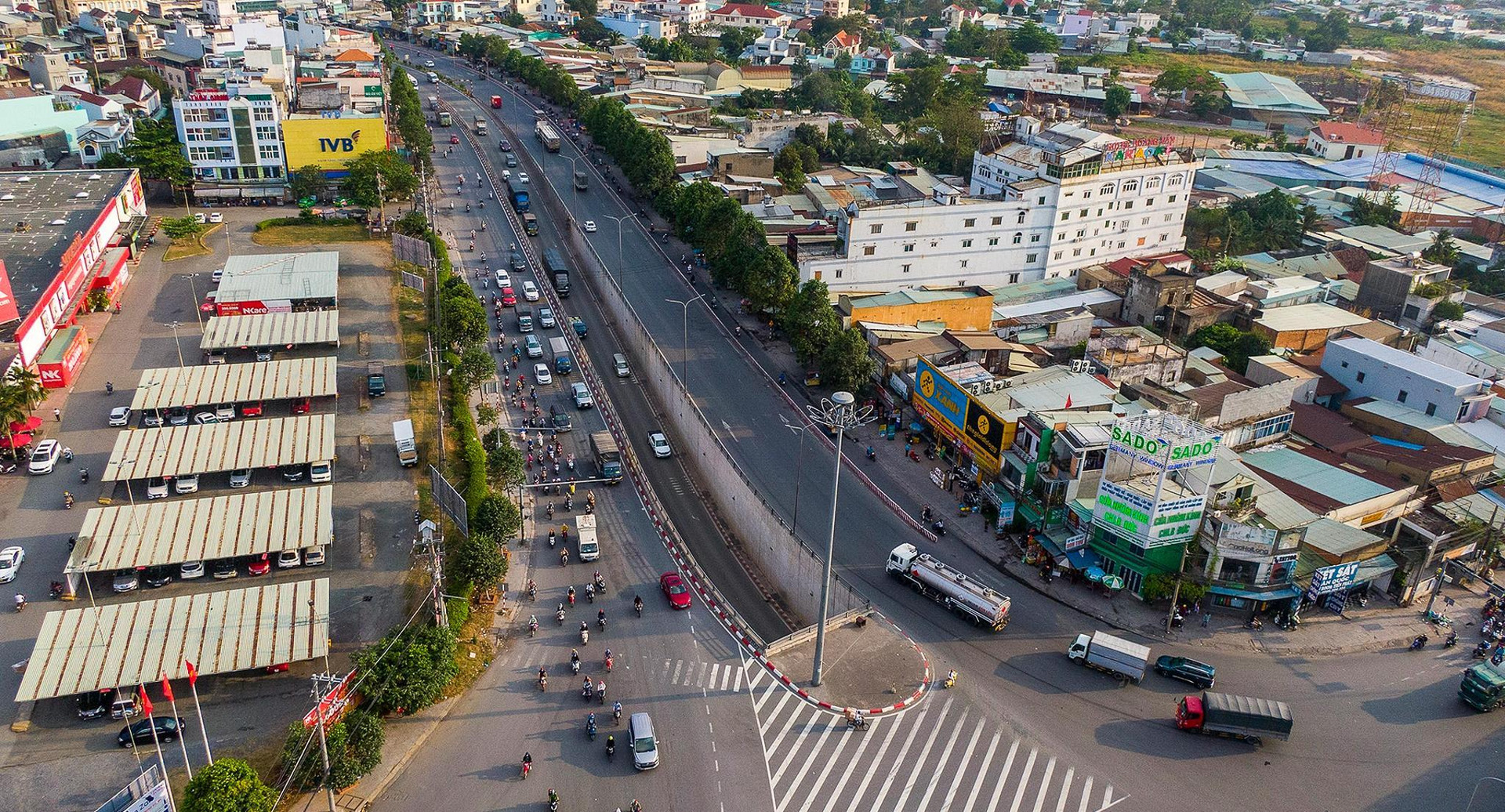
The goal of Bà Rịa – Vũng Tàu Province’s Construction Planning is comprehensive development, becoming one of the important dynamic development areas in the Southeast Region, being the national coastal economic center, and being among the top 05 provinces in terms of coastal economic development in the country. By 2030, the province is expected to meet the standards of a centrally-run city, with a multi-center urban structure and a multi-modal transportation infrastructure.
In 2023, the Gross Regional Domestic Product (GRDP) of Bà Rịa – Vũng Tàu Province is expected to gradually improve, with each quarter showing higher growth than the previous one, specifically: 1st quarter up 1.45%; 2nd quarter up 3.74%; 3rd quarter up 9.06%; and 4th quarter up 10.61%.
The estimated GRDP for 2023 is 366,456 billion VND, with a per capita GRDP of 308.7 million VND/year. In USD, the per capita GRDP is estimated at 12,908.7 USD/year. The per capita GRDP excluding oil and gas reaches 8,078 USD/year.
For the whole year of 2023, the total budget revenue in the province is 95,067 billion VND, exceeding the budget estimate by over 107% (the annual estimate is 88,591 billion VND), which is 84.82% compared to 2022. With this revenue, Bà Rịa – Vũng Tàu is the largest budget contributor among the provinces in Vietnam, following only 3 centrally-run cities: Ho Chi Minh City, Hanoi, and Hai Phong.
Specifically, the urban system planning aims to develop a green, smart, and climate-adaptive urban system. It aspires to form a urban system with a synchronized and modern infrastructure (including surface transportation, underground transportation, and overhead transportation), ensuring connectivity between cities within the province and with other cities in the region; to develop an urban area associated with the protection of natural ecosystems.
By 2030, Bà Rịa – Vũng Tàu is expected to meet the standards of a centrally-run city, playing a key role in the urban system of the Southeast Region; the area is planned to be established as a city meeting the criteria of a centrally-run type I city, based on the development areas of: Vũng Tàu, Bà Rịa, Phú Mỹ, Long Điền, Long Hải.
Develop and modernize satellite towns, acting as nuclei for development, leading and creating a spillover effect on developing suburban areas, coastal areas, and rural areas with 08 type V towns: Ngãi Giao, Kim Long, Hòa Bình, Phước Bửu, Bình Châu, Hồ Tràm, Đất Đỏ, Phước Hải, and 01 island eco-town (Côn Đảo).
After 2030, upgrade 2 towns – Ngãi Giao and Phước Bửu from type V to type IV; develop 02 new type V towns, which are Cù Bị and Suối Nghệ (in Châu Đức district).
By 2050, Bà Rịa – Vũng Tàu will become the national coastal economic center, the main gateway of the Southeast Region to the sea, with a multi-center urban structure consisting of urban centers: Vũng Tàu – Phú Mỹ – Bà Rịa – Long Điền – Long Hải, connected by a synchronized and modern urban transportation system (urban road system and Metro, MonoRail lines); a system of satellite towns of appropriate scale and a living environment quality meeting green urban standards.
Regarding the development orientation of the provincial capital, Bà Rịa City is the provincial capital of Bà Rịa – Vũng Tàu Province. From 2026 to 2030, the rearrangement of administrative units will expand the city based on receiving part of the area and population of Phú Mỹ town to ensure the city meets the criteria both in terms of natural area and population scale of the provincial capital. Building and developing the city to meet all criteria of a type II city according to the regulations on urban classification.
After 2030, Bà Rịa will be located in the center of the area expected to become the centrally-run city of Bà Rịa – Vũng Tàu.
Together with Vũng Tàu – Bà Rịa, 1 town and 2 districts are expected to be included in the inner city area
According to the plan, along with the current 2 cities, Phú Mỹ town, Long Điền district, and Đất Đỏ district will become the area expected to establish the centrally-run city of Bà Rịa – Vũng Tàu (inner city area) meeting the criteria of a type I city, based on the plan to establish the city of Bà Rịa – Vũng Tàu. Phú Mỹ town will become a city under the province. At the same time, Long Điền district and Đất Đỏ district will be merged into one unit.
Specifically, the rearrangement plan is as follows:
– Stage 2023-2025:
+ Merge Long Điền district and Đất Đỏ district into one unit.
+ It is expected to arrange 9 communal-level administrative units as follows: merge An Nhứt commune, An Ngãi commune, and Tam Phước commune (Long Điền district); merge Phước Trung ward and Phước Hiệp ward (Bà Rịa City); merge Phước Hội commune and Lộc An commune, merge Long Mỹ commune and Phước Hải town (Đất Đỏ district).
– Stage 2026-2030:
+ Expected to adjust the administrative boundaries between Bà Rịa City and the new Phú Mỹ City based on their specific features in terms of historical tradition, geographical location, natural conditions, and ensuring both units meet all the criteria in terms of area size and population according to the regulations.
+ Plan to arrange 6 communal-level administrative units as follows: adjust the administrative boundaries between Phước Long Thọ commune and Long Tân commune (Đất Đỏ district), between Hòa Hội commune and Hòa Hưng commune (Xuyên Mộc district); merge Phước Hưng commune into Long Hải town.
The specific content regarding the merger, adjustment of administrative boundaries; determining the boundaries, area size, population, and names of each administrative unit will be implemented according to the approved project decided by the competent authority.








































